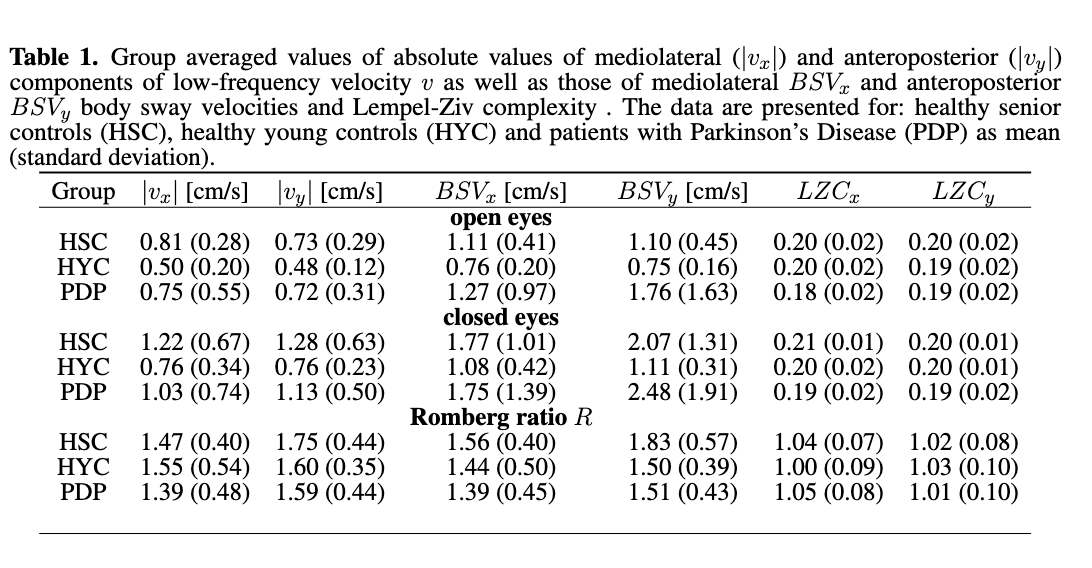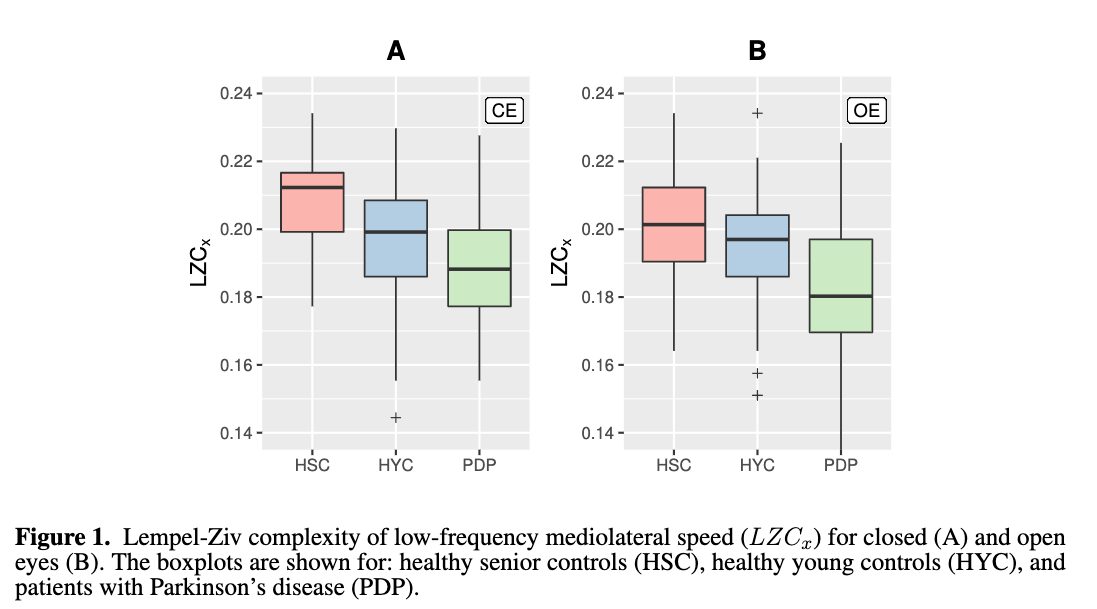Objective: To distinguish the effects of aging and Parkinson’s disease on balance control.
Background: Many balance control measures are derived from spontaneous fluctuations of the center of pressure (COP) during quiet standing. Although the planar COP trajectory reflects some aspects of an underlying control process, theoretical analysis and experiments indicate that balance control is more likely to be velocity-based than position-based. This study aims to determine the influence of aging and PD on the complexity of low-frequency sway velocity fluctuations in the ON state. We hypothesize that a decrease in complexity is a distinct
manifestation of PD pathophysiology.
Method: We performed static posturographic tests (eyes open and eyes closed) during quiet standing in feet together stance for n=48 patients with Parkinson’s disease (PDP) in the ON state and compared the results with those of n=56 age-matched healthy senior controls (HSC) and n=52 young controls (HYC). Using an FIR differentiator filter, we calculated the time series of low-frequency sway velocities: Vx (mediolateral direction) and Vy (anteroposterior direction). For each direction, we computed the mean value of speed (absolute value of velocity), and the Lempel-Ziv complexity. To compare with previously published data, we also calculated the body sway velocity (BSV), defined as the length of the COP path (low-passed with a fourth-order Butterworth low-pass filter with a cutoff frequency of 10 Hz) divided by the trial duration.
Results: There were no statistically significant differences in body sway velocity BSV (one of the most widely used traditional balance control metrics) between patients and age-matched controls. The most important and novel finding of the present investigation concerns the influence of aging and PD on the Lempel-Ziv complexity of low-frequency fluctuations of mediolateral velocity LZCx ([table1]). For open eyes, the LZCx of young and age-matched controls was significantly higher than that of the patients. In closed eyes, the average value of LZC_x for HSC was 11% higher than that for HYC. For PDP, we observed a 7% decrease in LZC_x with respect to HYC, giving an 18% difference between PDP and HSC ([figure1]).
Conclusion: Aging and PD have opposite effects on the complexity of the mediolateral velocity. We hypothesize that somatosensory impairment underlies diminished complexity of mediolateral velocity in PD.
To cite this abstract in AMA style:
M. Latka, K. Kozlowska, A. Latka, M. Glaubic-Latka, S. Budrewicz, M. Koszewicz, T. Sebzda, BJ. West. Manifestations of aging and Parkinson’s Disease in low-frequency fluctuations of postural sway velocity [abstract]. Mov Disord. 2023; 38 (suppl 1). https://www.mdsabstracts.org/abstract/manifestations-of-aging-and-parkinsons-disease-in-low-frequency-fluctuations-of-postural-sway-velocity/. Accessed October 15, 2025.« Back to 2023 International Congress
MDS Abstracts - https://www.mdsabstracts.org/abstract/manifestations-of-aging-and-parkinsons-disease-in-low-frequency-fluctuations-of-postural-sway-velocity/


